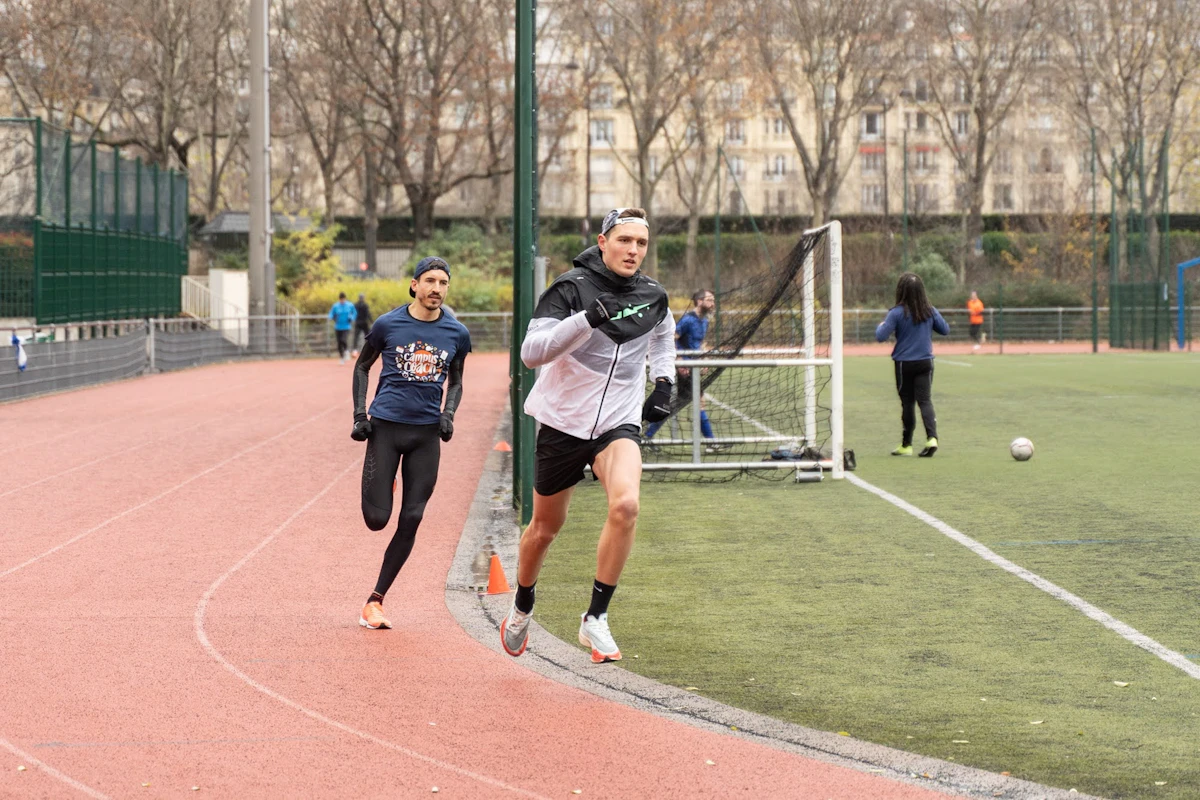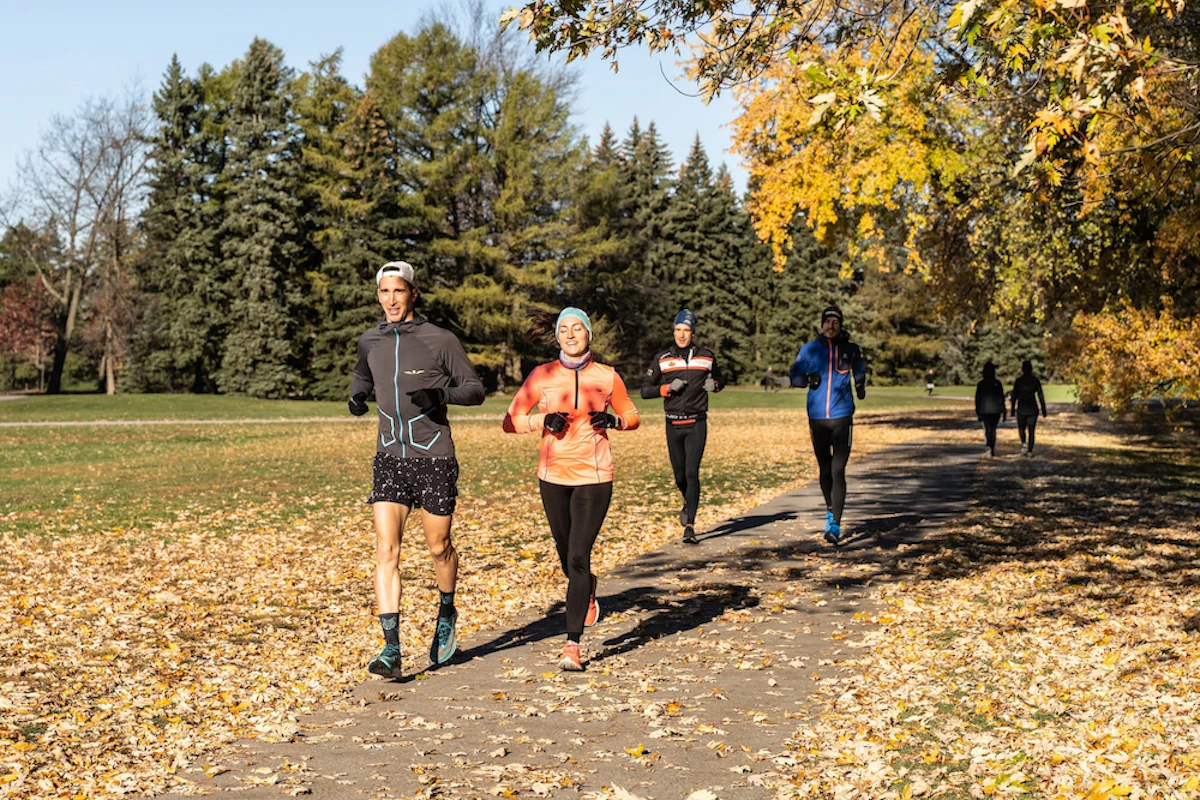
12 min read
Summary
Coach Tip 1: Run Regularly
Coach Tip 2: Learn to Run Slowly
Coach Tip 3: Don't Neglect Speed
Coach Tip 4: The Long Run
Coach Tip 5: Cross Training to Improve Your Endurance
Improve your endurance based on your level.

Receive advice from our passionate coaches!
Today, we are going to give you our recommendations to improve your endurance. Whether you have a speed profile or prefer long distances, endurance remains a quality you need to work on.
But what is endurance? The definition is simple:
“Endurance is the ability to maintain a certain level of intensity for as long as possible.”
Thus, working on your endurance will allow you to run longer, at the highest possible pace without becoming more tired.
Specifically, Campus's endurance training plan combines long runs with workouts of pace and threshold variations that will allow you to increase your resistance and endurance in an ideal balance. But to make this work even better, here are the basics to apply throughout your training plan.

🔥 Discover your endurance plan right here!
Coach Tip 1: Run Regularly
No miracle solution: consistency in your training sessions, is the key to improve your endurance. See this as an essential foundation to develop this quality.
If you follow a Campus plan, you will be able to have three, four or five training sessions per week depending on your level, but also on your goal. It's better to have regular training over time (even light) than a lot of intense training over a short period, followed by a period of complete rest.
Improving your endurance is a long-term goal that will require patience and motivation, but you will see that the progress is really worth all these efforts!
Coach Tip 2: Learn to Run Slowly
Depending on your plan, you will be able to find base endurance workouts in your running training. This type of workout consists of running at about 75% of your Maximum Heart Rate (MHR). Specifically, you must be able to hold a conversation during this type of workout. It's at this pace that a good base for your endurance will be built.
Granted, at first, it is very confusing to run slowly, but it is by learning to slow down that you will improve your endurance. Don't be mistaken: it's perfectly normal to be too fast at the beginning! But patience and consistency in this type of workouts will help you make progress in the long term.
Training at this pace will gradually allow you to lower your heart rate for the same speed, or even achieve a faster speed. True progress will be felt when your runs become too easy, you can pick up the pace a bit, and enjoy them. That is then the beginning of the virtuous circle of endurance!

Coach Tip 3: Don't Neglect Speed
To improve your endurance, you will need to perform interval workouts.
Many paces will allow you to progress in different ways. Making it a mix ensures you an improvement in your endurance.
Threshold (30' and 60'): they are certainly fast running paces, but not “all-out”. These are zones that you can maintain for 30 or 60 minutes when you are in peak condition. You're still in control and not completely struggling, we like to call the 60' Threshold "the comfortably hard zone". The 30' Threshold will be a bit faster by definition, but good news: you won't have to maintain this pace as long!
MAS and pace variations: will allow you to develop your power and increase your limits. Mechanically, if you push your maximum capabilities, you will leave more margin for your endurance capabilities and thus delay fatigue.
💡 If you choose Campus, you won't have to think hard to manage your speed and slower pace workouts, the coach will take care of finding the best balance based on your profile.
Coach Tip 4: The Long Run
When we talk about a long run on Campus, we're not talking about a 3-hour run (even to prepare for a marathon!). , because such durations can have more negative than positive effects on your body: increased fatigue and thus risk of injury or even longer recovery.
We're simply referring to longer runs than the others. There are no set rules as it depends on each individual's level. Over time, you'll be able to work on increasing the duration of this type of long run.
The mechanism is simple: you'll push your body to run longer and thus the generated stress will allow you to overall improve your endurance. Don't hesitate to do this type of workout in a group with Campus members, family, or friends. You'll find that it will go much faster!
Coach Tip 5: Cross Training to Improve Your Endurance
If you want to know everything about cross training, we provide it in the knowledge section of your Campus account.
We're not teaching you anything, but running can be traumatic for your body and joints, especially if you increase your training volume too quickly. Our philosophy at Campus is a gradual approach. If you want to train more in base endurance, it's possible with less impactful sports like cycling or swimming.
Just like running, these other sports will allow you to develop your cardiovascular and pulmonary capacities and thus improve your endurance in the long term. We strongly advise you to engage in cross training only in addition to your running workouts and not in place of them. To be a better runner, nothing replaces running.

Improve your endurance based on your level.
If you are a beginner, improving your general endurance will be quite easy. But the more you progress, the more you will tend to stagnate or progress less. That's when you need to keep your motivation and the desire to break through this new ceiling.
If you have a good level: you can expect to see real improvement after a few months or even a few years. But believe us, all the work you're going to do will bear fruit.
If endurance is not a strong point or you're a beginner in running : you can already see significant progress after a few weeks. Afterwards, your progress will surely slow down: it's normal. you'll just need more time to break through the next progress ceiling, so don't get discouraged at all!
As Tristan, Campus coach, would say: "we're not going to reinvent the wheel". Our 5 tips are very basic and easy to apply, but put together, they will allow you to sustainably improve your endurance. It's a long process, but hard work always pays off, so be patient!







